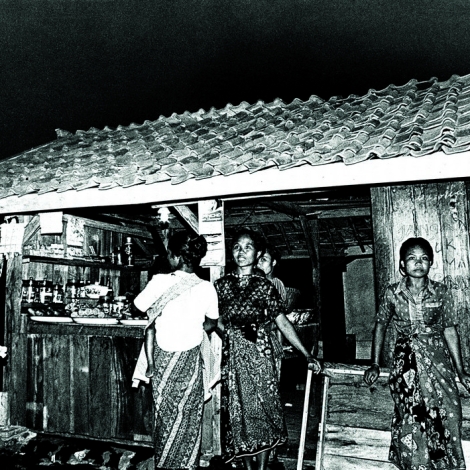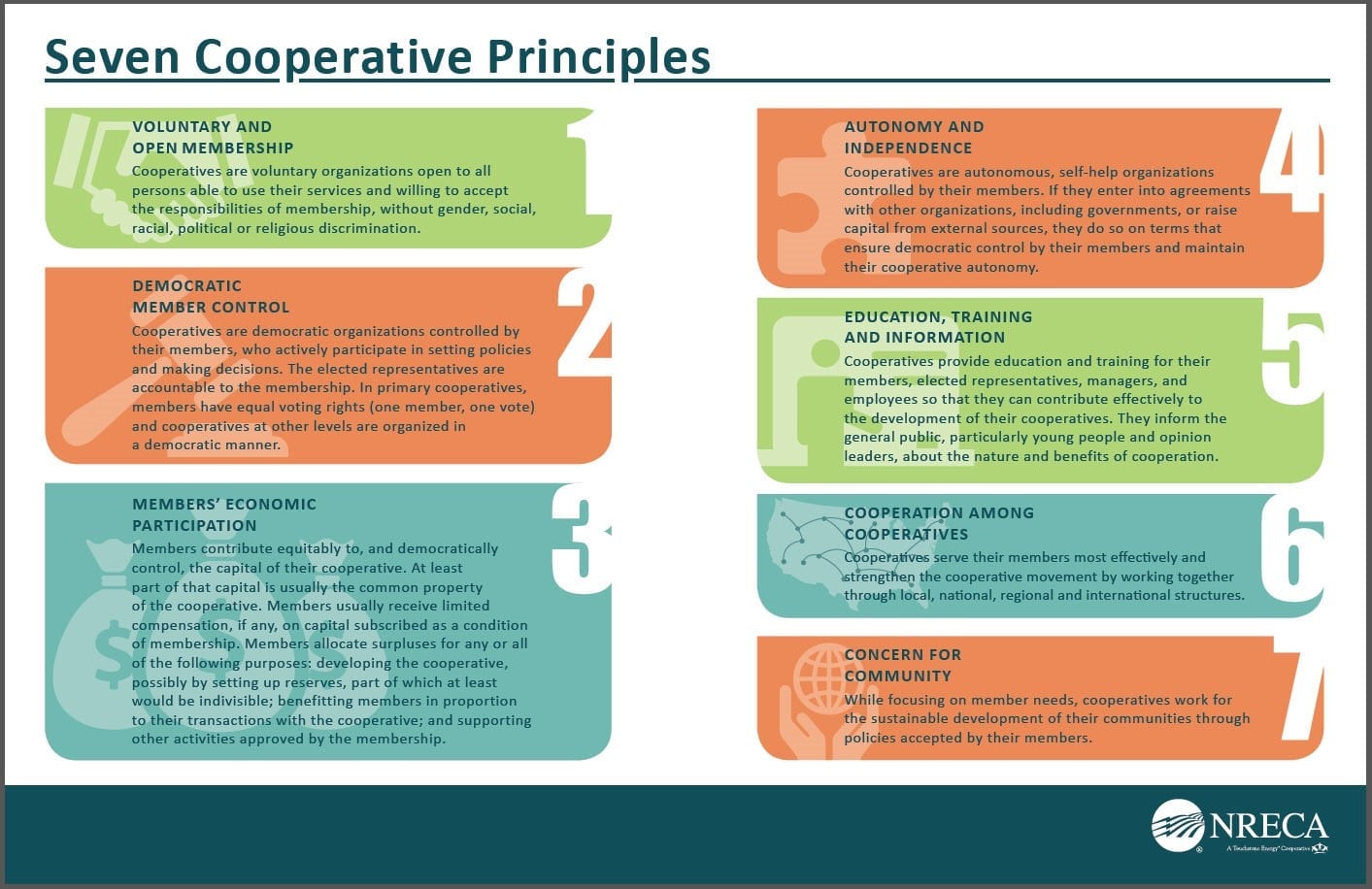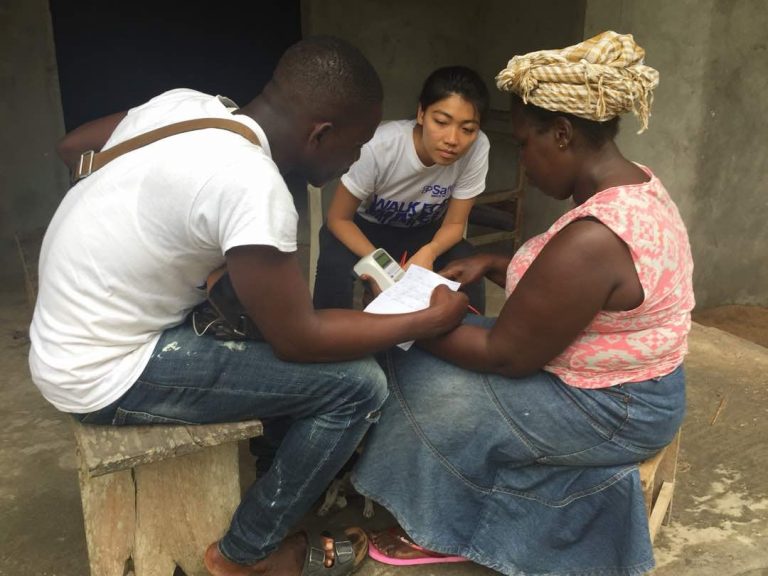Why member-owned co-ops are the best kept secret in humanitarian development
In publications like E4C, practitioners are exposed to diverse perspectives from experts in engineering for global development regarding the best strategies for community engagement, human centered design, appropriate technology, and social entrepreneurship. Among so many approaches to humanitarian impact, there remains a lively debate between the inherent merits of for-profit versus non-profit approaches. But is there a third way?
The choice between inefficiency and neocolonialism
Oftentimes, non-profit models are thought to be old-fashioned. They seem reminiscent of large, monolithic NGOs, some of which have been accused of excessive overhead and administrative costs, as well as mismanagement of funds in the context of disasters. Thought leaders such as Paul Polak have proclaimed “The Death of Appropriate Technology,” accusing global aid providers of creating non-viable markets with overpriced ideas that are highly prone to failure in heavily subsidized and poorly understood operating environments. This critique is certainly relevant in a world where upwards of 30-40% of water pumps in Africa are in disrepair, and developing economies are craving “Trade, Not Aid” for sustainable growth. Much has been written about how the phenomenon known as “Poverty, Inc.” has created an aid-industrial complex which fosters foreign dependency rather than local self-reliance in the case of Haitian rice or Jamaican dairy, for example.
Over the past decade, the discourse of development has favored social entrepreneurship models, whereby strict free-market principles govern the strategy and allocation of investment in emerging markets. Many of the former paradigms of Participatory Rural Assessment (PRA), community-driven strategic planning have been replaced by human-centered design (HCD) product-driven design interventions. The contrast in these approaches is the tendency of PRA to yield slow results with high overhead costs versus HCD’s emphasis on rapid prototyping and business models, with implicit assumptions that a market-based approach can address socioeconomic marginalization.
In the social entrepreneurship model, project-companies focus on tweaking known products in hopes that mass production will drive down costs for accessibility, while earning revenue via volume-driven franchise models to reach scale. While this model has yielded several incredible success stories (notably d.light became the world’s leading solar lantern thanks to $2.9M from the Acumen Fund), due in large part to “patient capital” from large foundations and angel investors, the ultimate success rate of start-up social enterprises in developing countries is largely unknown. There have also been some noteworthy products that didn’t live up to the hype (LifeStraw, Sockket soccer ball, PlayPump). This funding paradigm favors foreign entrepreneurs with access to capital rather than local stakeholders whose ideas are less likely to encounter deep pockets. The result is a neocolonialist distribution of foreign investment in products designed for – not with – those in greatest need.
What about crowdfunding?
Some donors have been enthusiastically supportive of startups with timely ideas that create crowdfunding appeals for game-changing startup funding. When we look at the actual results of these Cinderella stories (Solar Freakin’ Roadways raised $2,275,872, Gravity Light raised $399,590), we find ‘viral’ concepts that might have been shunned by investors, yet they attract large amounts of donor funding from everyday web surfers. Generally, these campaigns are made by not-for-profit organizations, but at times it can be used by social enterprises to raise capital without surrendering equity. However, this model decouples funding from outcomes in the field, promoting a lack of transparency and accountability that could render the product useless or even harmful to end users (if they ever get their hands on it).
So, is there another way?
We tend to overlook the capability of the public sector in funding or sustaining sustainable development work. This approach is easily validated by direct experience: If governments in emerging markets had sufficient resources, then the UN’s development goals (the Millennium Development Goals that have evolved into the Sustainable Development Goals) would already be satisfied. We would have clean water for all and universal electrification achieved by taxes, not donations, without any foreign intervention. Oftentimes, progress towards these goals is hindered by real or perceived volatility and corruption in public sector agencies for public works. Long-term project horizons may be compromised by changes to the ruling party in election years. Big aid projects might be derailed by lack of accountability in civil society for large government contracts issued to multinational firms or fledgling local companies. Clearly, public-sector actors need private sector collaborators.
Cooperatives: Unfashionably effective
Many large infrastructure projects around the world are managed by cooperative governance structures. These entities are so far out of vogue as to be seldom even mentioned in contemporary discussions of humanitarian engineering. Could that be because cooperatives are primarily a sociological, not a technical phenomenon? Perhaps the engineering sector overlooks what it doesn’t understand. Take the following examples:
- Rural electrification in the USA was not achieved by handheld solar lanterns. It was stimulated by a massive public works project under the Rural Electrification Act to put people back to work after the Great Depression. In rural areas of the USA, there are miles between electricity customers. For investor-owned utilities to serve those areas would have taken decades to see any return on investment based on meager electric consumption. Rather than create a massive new appendage of the Federal government, rural communities created over 800 member-owned electrical cooperatives to sustainably manage and maintain their infrastructure for the past 80+ years.
- Remote water distribution systems installed by NGOs such as Engineers Without Borders USA have a lot to tell us about project sustainability. In 2013, EWB-USA hired local practitioners to audit all of its water distribution projects in Guatemala. It turned out that all of the projects with a full-time paid circuit rider (maintenance personnel) were in good working order, whereas the working condition of systems without a budget for cooperative maintenance was much more inconsistent. In other words, the sustainability of the bricks and mortar were primarily dependent upon the resilience of the cooperative social network that maintained it. Going forward, EWB-USA and many peer organizations now require a “water board” (basically a member-owned cooperative) to own and maintain its infrastructure and technology for improved sustainability.
- Large-scale worker-owned cooperatives, such as Mondragon in Spain, have demonstrated the capability to compete in highly competitive consumer markets without compromising labor conditions or workers’ rights. The question remains whether this paradigm can thrive in emerging markets where skilled labor and capital are less plentiful.
In the matrix below, I examine differential factors and outcomes of various governance structures.
Let’s start by asking the right question
As Einstein would say, “we cannot solve our problems with the same level of thinking that created them.” When we fail to transcend the exploitation, oppression, and dependency of neoliberal and neocolonialist interventions, we replicate the same broken promises that developing communities have come to expect from Western intervention.
Aspiring development engineering practitioners often ask, “Should my big ideas be for-profit or non-profit?” In fact, the premise of starting the conversation around “my” ideas for other people’s livelihoods is inherently flawed, and perhaps reflects implicit bias in favor of foreign intervention rather than local self-determination.
On the other hand, philanthropists and impact investors looking to support big ideas often ask, “Should I be an investor or a donor?” In fact, delegating our capital to foreign owners presumes that community members are somehow incapable of taking ownership and autonomy for their own capacity building. Such presumptions are frequently built on discrimination, racism, or cultural superiority—infantilizing the very people we attempt to help.
Let’s re-frame the discussion. Let’s make the most significant question become, “What structure maximizes the resiliency, ownership, and self-determination of the end users?” Quite honestly, why else would we have been invited in the first place? If we really believe that the role of development engineering is to collaborate with communities in pursuit of a brighter future of shared possibility, then development practice must be re-oriented as pedagogy. Engineering-For-Change does not mean depositing “our” ideas and technology into “their” community, but fostering the mutual discovery and amplification of voices we’ve never heard before.
Design is a manifestation of creativity and creation is a means toward liberation. The goal of humanitarian development is not only to reduce vulnerability, but also to increase resiliency. Therefore, empowerment won’t be the destination unless it was also the journey. As development practitioners, establishing leadership and ownership within a local cooperative is the most effective way of deliberately working ourselves out of a job and leaving communities stronger than we found them.




Yes, I have ARRIVED AT the same CONCLUSION: empower communities to realize their wealth through COMMUNITY-OWned enterprise. FIRST up, mindset training that EMPOWERS AGENCY. Communities are poor to the extent they refuse agency, the outcome of oppression. When agency has an economic OUTLET, communities thrive. My favorite example is Japan’s one village one product http://www.ovop.jp/en/
i fULLY AGREE WITH YOUR PROPOSED SOLUTION OF COOPERATIVES. hOWEVER SPEAKING FROM A MORE eUROPEAN PERSPECTIVE, MANY OF THESE SOLUTIONS HAVE BEEN ALREADY IMPLEMENTED SINCE ANCIENT TIMES, THOUGH NOW LARGELY FORGOTTEN eXCEPT aMONG THE MENNONITES & AMISH OVER HERE. a WEAKNESS IN THE AMISH SYSTEM IS THEIR REJECTION OF NEARLY ALL MODERNITY,(THEY REMAIN FIRMLY IN THE 17TH CENTURY), YET USE MODERN MEDICINE WHEN SERIOUSLY ILL, SO NOT ENTIRELY SUSTAINABLE. tHE mENNONITES, hOWEVER, dO ACCEPT SOME FEATURES OF CONTEMPORARY SOCIETY & WILL USE ELECTRICITY, CARS ETC. thEY ARE PARTICULARLY VALUABLE IN BRINGING MARGINAL LAND INTO PRODUCTION. sIMILAR IDEAS WERE USED BY THE JEWISH SHTETLS (LONG GONE IN THE HOLOCAUST), KIBBUTZES, IRISH MONASTERIES, THE VENERABLE BEDE IN JARROW, NORTHUMBRIA, NEOPLATONISTS OF ANCIENT EGYPT, ETC. the GENERAL IDEA BEING TO BRING INTO EXISTENCE SUSTAINABLE COMMUNITIES WITH THEIR OWN VALUE SYSTEMS. if THESE IDEAS COULD BE HARMONIZED WITH THE SECULAR STATE, SUCH THAT ATHEISTIC/agnostic COMMUNITIES CAN COEXIST WITH (& VALUE) MONOTHEISTIC & OTHER FAITHS & ALIEN PHILOSOPHIES (fIRST DO NO HARM——) hIPPOCRATIC OATH.
a vet LIVING WITH ptsd UNDER A BRIDGE, AN ABUSED RUNAWAY YOUTH, LONG TERM UNEMPLOYED, THE MENTALLY NOT-TOO-ILL, SINGLE MOMS, MIGHT JUST BE GIVEN NEW VALUE A COOPERATIVE SYSTEMS OF MONETIZED ELECTRICITY THAT RESEMBLED THE BEST OF THE HIGH MIDDLE AGES, BUT WITHOUT ALL THE FEAR, FLAMES, pLAGUE , STENCH & iNTOLERANCE. the KEY INGREDIENTS HERE ARE JUST SUNLIGHT, CO2, N2, h2O & SMALL AMOUNTS OF ROCK CONTAINING SO4–, PO4—, fE3+. iF THE WASTE STREAM COULD BE USED TO SUPPORT & GIVE INDEPENDENCE TO THE UNWANTED IN THEIR OWN COMMUNITIES, THEN THIS I THINK WOULD BE “PROGRESS”. tHE WEALTHY CITIES, WOULD I AM SURE, BE GRATEFUL FOR THEIR SEWAGE, TRASH ETC. TO BE USED AS THE BASIS FOR REMANUFACTURING & ENERGY THAT WOULD SUPPORT THE ENTIRE ECONOMY.
“teRRAFORMING” THE INNER CITY & THE RUST BELT MIGHT BE REALISTICALLY POSSIBLE AS WELL AS MARTIAN BASES. iT MIGHT ALSO BE USEFUL IN CASE OF WAR, EMP STRIKES ETC.
Perhaps the most dynamic, innovatory systems involved trade between competing city states – Hellenistic city states, The Italian renaissance cities or between superpowers. controlled conflict may create the most innovation. however, as computerized technology now intrudes on almost every aspect of modern life, most jobs are going to “go away”. Hence lower tech. forms of civilization may be all that the unemployed will have open to them. Yet our needs our relatively simple: food, drink, shelter, family & community. even animals have figured this out.
In terms of the most successful contemporary societies, singapore & the island of penang, malaysia, come out well ahead of everyone else. However though these islands are entrepreneurial “hothouses”, their economies are largely based on trade. I am not sure how well these models would translate to an oasis in the middle of the sahara.
However using waste & sunshine as one’s initial & primary resources effectively turns the modern world “upside down” with potentially disastrous results as it provides a destabilizing caveat to “laissez faire”. laissez faire has worked very well these last 3 centuries & i am reluctant to “mess with it”.
However I suspect it would do little harm to recycle the plastics, metals, glass & electronic waste, while using the bulk organic residue for fuel.
Careful observation of energy, currency & carbon flow & waste disposal in prisons, monasteries, & “primitive” or isolated communities may yield dividends in understanding methods for the reversal of marginalization & unemployment Among those lacking education or opportunity.
The DC Transformer is invented, but not developed. I would like to enlist local help, from builders of DC Microgrids, in development for specific applications. I expect to offer kits, as opposed to finished articles, so that local makers can participate in the specific design, and do all of the construction.